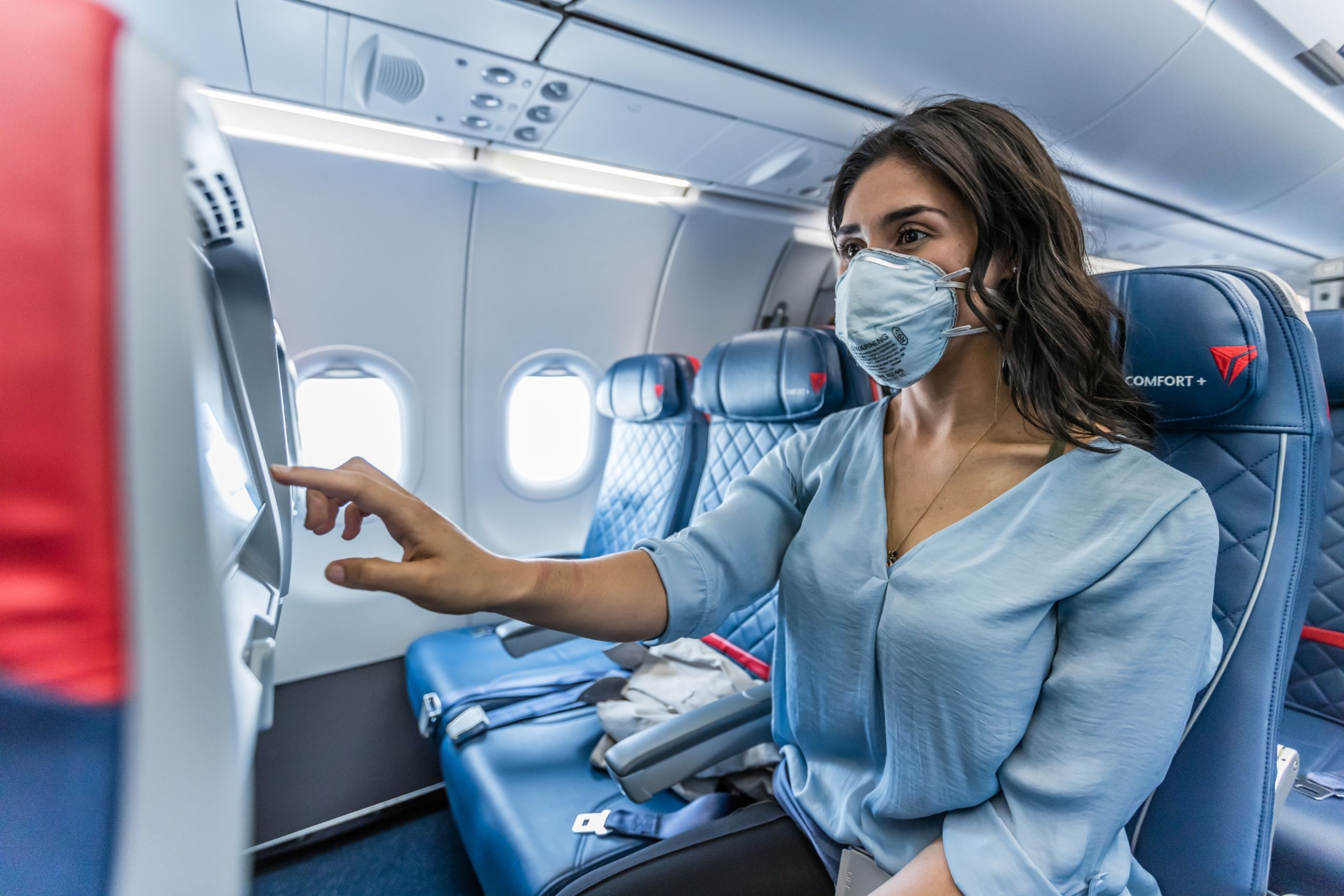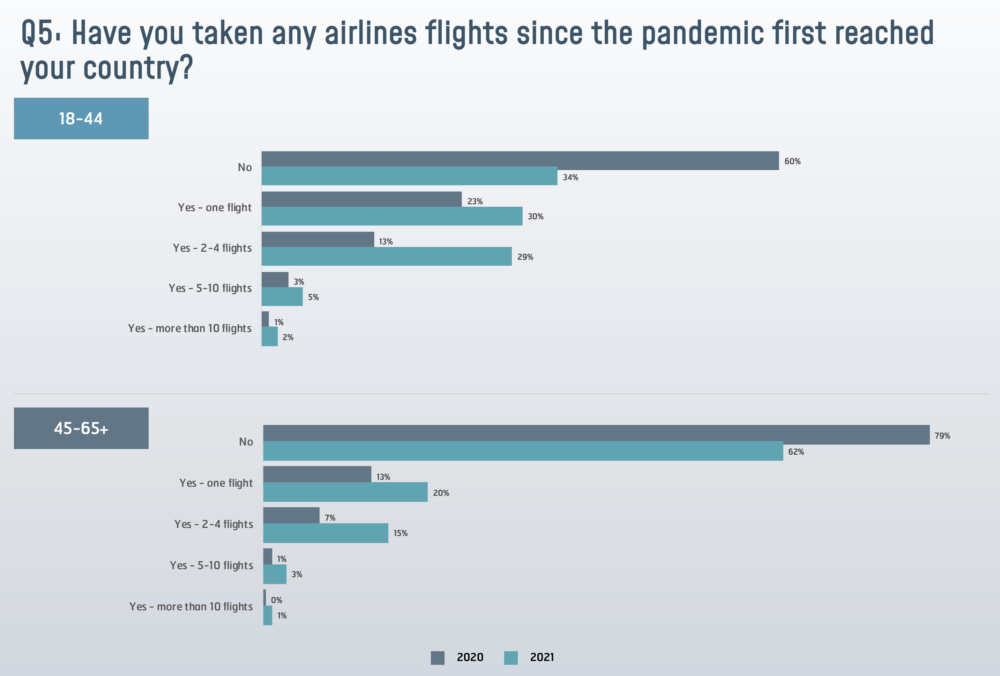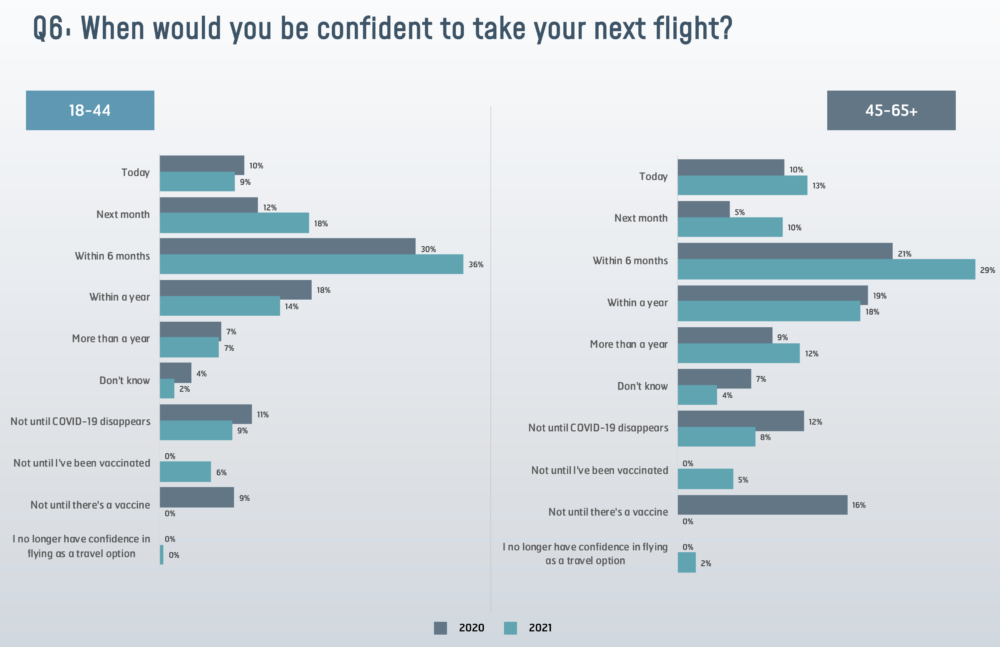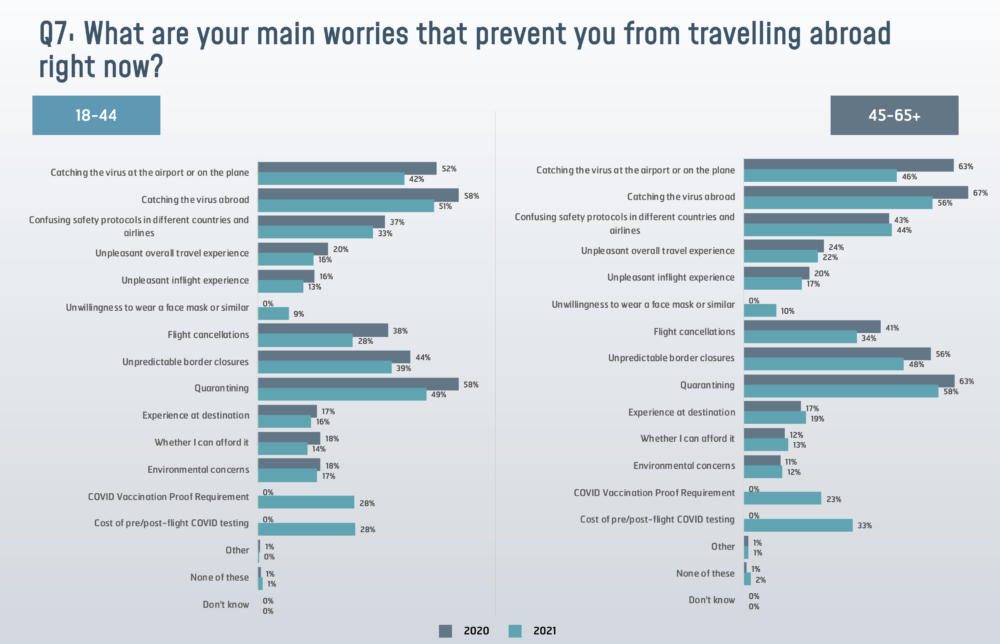Leading satellite communications company Inmarsat has released its 2021 Passenger Confidence Tracker. For the second year running, the firm has partnered with Yonder to undertake a survey of more than 10,000 airline passengers around the world to establish what is worrying them, and what they are feeling confident about.
It’s the second year running that Inmarsat has conducted the extensive air passenger survey, making it even more valuable, as now we can see the change in passenger confidence from the first year of the pandemic to now. Philip Balaam, President of Inmarsat Aviation, said,
“There is no denying that the past 18 months has been a turbulent time for airlines and passengers alike. However, the latest International Air Transport Association (IATA) figures show that demand for both international and domestic travel is gaining significant momentum. In order to maintain and even accelerate this growth, it’s essential to rebuild passenger confidence and ensure their evolving needs are met in a post COVID world.
“Our latest Passenger Confidence Tracker, the largest global survey that Inmarsat Aviation has ever commissioned, offers detailed insights into the main areas of confidence and concern around air travel, direct from the passengers themselves. Such findings will allow airlines to increase their focus on key priorities and seize the exciting opportunities ahead as the industry continues its long-term recovery.”
Overall, the results of the survey suggest that confidence in air travel is rising, but also that some barriers remain. Let’s take a look.
Stay informed: Sign up for our daily and weekly aviation news digests.
60% of passengers are ready to fly soon
The numbers reflect the reality: more people are flying. Inmarsat’s research showed that only one-third of 18 – 44-year-olds had not flown at all since the pandemic started. That stands in stark comparison to the 60% who had not flown this time last year. In older age groups, there is further to go, but the numbers are heading in the right direction. 62% of 45 – 65-year-olds have not flown at all, compared to 79% in 2020.
Of course, the majority of these people, 53%, are flying to domestic destinations only. However, 19% of 18 – 44-year-olds and 28% of 45+-year-olds have flown to international destinations only, while 27% and 20% have flown to a mix of destinations, respectively.
The most interesting change to note is the readiness to fly again in the near future. 36% of 18 – 44-year-olds said they would like to fly within six months, up from 30% in 2020, and 18% wanted to go somewhere within a month, up from 12% last year. In the older age groups, there is a little more hesitation apparent, but not significantly so. 29% are ready to fly within six months, up from 21% in 2020. Overall, across all age groups, 60% of passengers feel confident to take a flight within a year, up from 47% last year.
What’s still stopping them?
Despite confidence in air travel showing definite signs of picking up, there are still some barriers creating hesitation. The top three reasons to put off taking a flight were quarantining (51%), unpredictable border closures (41%) and confusing safety protocols (36%).
There are some geographical differences of note, also. For example, respondents in the Americas are more worried about catching the virus, whereas the inconvenience of having to quarantine is the most pressing concern in EMEA. Specifically, the highest response for quarantine being a barrier came from Singapore, at 69%, closely followed by the UK, at 67%, and Australia, at 66%.
Newly added to the survey for this year were questions on the requirement to prove vaccination status, the cost of testing, and the need to wear a mask. The UK respondents cited the cost of testing as a significant barrier, with 56% picking this concern – significantly more than any other country. Overall, around a third of people cited vaccination proof and testing costs as barriers, but only 9% were worried about the need to wear a mask.
In terms of what the industry can be doing to sway those who are still reluctant to travel, the overarching message was the same as last year. Passengers want consistency and predictability. Responses were almost identical to last year, demanding a consistent worldwide set of safety standards, the same quarantine rules across countries, and all airlines following the same hygiene practices.
Most passengers support the idea of vaccine passports, with more than 80% saying they are a good idea and should be implemented. In combination with things like the IATA Travel Pass, such technology could give passengers some of that consistency that they evidently crave.
The full report can be downloaded from Inmarsat’s website.




